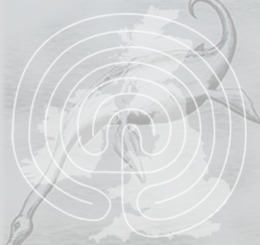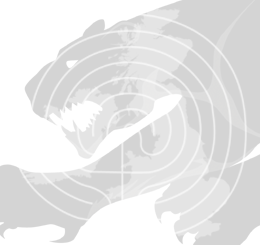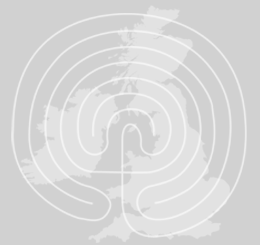Te Hokioi
The following article by Paul Rodgers entitled ‘Maori legend of man-eating bird is true’ appears on The Independent’s website and is dated 14 September 2009.
Creature that features in New Zealand folklore really existed, scientists say.
A Maori legend about a giant, man-eating bird has been confirmed by scientists. Te Hokioi was a huge black-and-white predator with a red crest and yellow-green tinged wingtips, in an account given to Sir George Gray, an early governor of New Zealand. It was said to be named after its cry and to have “raced the hawk to the heavens”. Scientists now think the stories handed down by word of mouth and depicted in rock drawings refer to Haast’s eagle, a raptor that became extinct just 500 years ago, shows their study in The Journal of Vertebrate Paleontology.
Haast’s eagle (Harpagornis moorei) was discovered in swamp deposits by Sir Julius von Haast in the 1870s. But it was at first thought to be a scavenger because its bill was similar to a vulture’s with hoods over its nostrils to stop flesh blocking its air passages as it rooted around inside carcasses.
But a re-examination of skeletons using modern technology, including CAT scans, by researchers at Canterbury Museum in Christchurch and the University of New South Wales in Australia showed it had a strong enough pelvis to support a killing blow as it dived at speeds of up to 80kph.
With a wingspan of up to three metres and weighing 18kg, the female was twice as big as the largest living eagle, the Steller’s sea eagle. And the bird’s talons were as big as a tiger’s claws. “It was certainly capable of swooping down and taking a child,” said Paul Scofield, the curator of vertebrate zoology at the Canterbury Museum. “They had the ability to not only strike with their talons but to close the talons and put them through quite solid objects such as a pelvis. It was designed as a killing machine.”
Its main prey would have been moa, flightless birds which grew to as much as 250kg and 2.5 metres tall. “In some fossil sites, moa bones have been found with signs of eagle predation,” Dr Scofield said.
New Zealand has no native land mammals because it became isolated from other continents in the Cretaceous, more than 65 million years ago. As a result, birds filled niches usually populated by large mammals such as deer and cattle. “Haast’s eagle wasn’t just the equivalent of a giant predatory bird,” said Dr Scofield. “It was the equivalent of a lion.” The eagle is thought to have died out after the arrival, 1,000 years ago, of humans, who exterminated the giant moa. The latest study shows it was a recent immigrant to the islands, related to the little eagle (Aquila morphnoides) an Australian bird weighing less than 1kg.
Remains of Haast’s eagles are rare because there never were many. They lived only on New Zealand’s South Island, with probably not more than 1,000 breeding pairs at any one time.




Re: Te Hokioi
This has been an hotly debated topic in the Cryptozoological community for some time now.
I am sceptical, strongly sceptical. There’s a similar tradition in the Fiji Islands about the Ngani-Vatu, a large men eating bird. No large bird of prey, living or exint, is known from the Fiji so it’s probably a cultural tradition or widespread myth.
If I remember correctly Haast’s eagle is believed to have become extint between the XIII and XV century. Extermination of its main food source (large moas) was probably the main cause though a few implements (mostly fishing hooks) fashioned out of the great eagle’s talons have been found in Maori middens, hinting the bird may have been hunted by Maoris.
In Distortion We Trust
Re: Te Hokioi
One of the myths concerning this bird can be found on this site concerning New Zealand Birds.
Re: Te Hokioi
Regarding Fiji: similar legends could have different causes. I certainly wouldn’t have wanted to be caught out in the open with a Haast’s Eagle about. Some owls have been known to cause injuries to humans and they are much smaller.
Re: Te Hokioi
Some owls have the innate instinct to fiercely attack anything that will come close to their nest: the Ural owl (Strix uralensis) in particular has gained quite a reputation among birdwatchers. This behavior is particulary marked when the young are about to leave the nest.
Eagles are also known to attack very large preys: Darren Naish had a piece about Steppe eagles (Aquila nipalensis) being trained to hunt wolves. But again, no unprovoked attack on humans are on record except for a dubious case from Scandinavia.
In Distortion We Trust
Re: Te Hokioi
We can’t infer much about the behaviour of extinct eagle species from the current relations. We do know that New Zealand had no mammalian predators and that birds filled those ecological niches. It is entirely possible, even likely, that Haast’s Eagle was a fearsome predator. It is also possible that it might have been the source of legends though the link is more tenuous.
Regarding cryptozoological legends in general: many legends do not refer to literal living creatures recorded by observers, though some do. I don’t think it is possible to say which is which without full investigation into each case.
Re: Te Hokioi
The renowned bird photographer Eric Hosking lost an eye to a Tawny Owl, proof enough that they can cause injury. en.wikipedia.org/wiki/Eric_Hosking